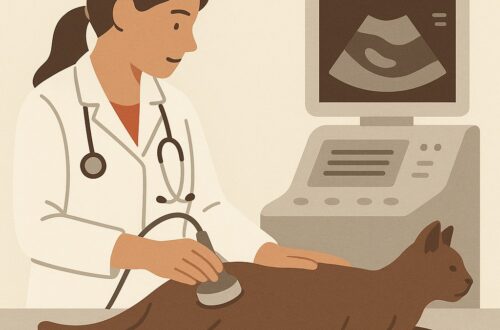You may have recently read a news story about a Wisconsin man who lost both of his legs and arms to an infection caused by the bacterium, Capnocytophaga canimorsus. This story caught the attention of news media because of the rarity of the infection and the severity of injuries. As this bacterium is commonly found in the mouth of dogs and cats, many pet parents have been contacting veterinary hospitals across the country because they’re worried about potentially experiencing a similar fate. So, this week’s post is dedicated to raising awareness of this infection. I hope you’ll share it with other pet parents to help spread the information. Happy reading!

Capnocytophaga – What is it?
Capnocytophaga species live in the mouths of humans, dogs, and cats. They are considered normal oral flora. Capnocytophaga canimorsus is the species most commonly implicated in zoonotic infection, that is an infection transmitted from an animal to humans. Research has shown up to 74% of dogs and up to 57% of cats carry C. canimorsus in their mouths. Happily, these gram-negative bacteria rarely, if ever, cause illness in our companions. “Capno” refers to the bacteria’s ability to survive in a local environment with high levels of carbon dioxide.

Capnocytophaga – How can I become infected?
Capnocytophaga canimorsus may be spread to humans through bites, scratches, and/or after close contact with dogs and cats. The major mode of transmission is via exposure of broken human skin to a pet’s saliva. For example, diabetic humans have been infected after allowing their dog to lick skin ulcers. Based on epidemiological studies in human medicine, 54% of human infections were caused by bites and 8.5% were caused by scratches. Just over a quarter of all human cases were reportedly caused simply by close contact with an animal.

Infection is considered to be opportunistic – this means the right conditions to exist have to exist for infection to occur. Humans with weakened immune systems are most susceptible to Capnocytophaga canimorsus infection. Common reasons for folks having compromised immune systems include:
- Individuals who don’t have a functional spleen
- Cancer patients
- Human immunodeficiency virus (HIV) patients
- Individuals who drink alcohol excessively
- Infants and children less than five years of age
Interestingly, approximately 40% of people are seemingly healthy with no immune system issues. In this patient population, being male, having diabetes mellitus, and being older than 50 years of age have been identified as risk factors for infection. Veterinarians have developed eye infections caused by C. canimorsus after teeth fragments hit their eyes during dental procedures.
Capnocytophaga – What does infection look like?
As mentioned earlier, humans actually have Capnocytophaga species in their mouths. Those with weakened immune systems most commonly develop infections in tissues connected to the throat and mouth, most notably periodontal disease, respiratory tract infections, and eye infections.
Life-threatening complications with this opportunistic infection occur when the bacteria gain access to the bloodstream. This phenomenon is called septicemia and may trigger body-wide organ dysfunction and failure. Common sites of complications in the body are:
- Brain – infection causes meningitis, inflammation of the meninges or lining of the central nervous system
- Heart – infection causes endocarditis, inflammation of heart vales
- Bone – infection causes osteomyelitis, inflammation of bones
- Chest cavity – infection causes pleuritis, inflammation of the lining of the chest cavity
Symptoms of infection often manifest five days after exposure. Most commonly, infected individuals develop flu-like symptoms, including headache, fever, fatigue, skin rashes, muscle pain, difficulty breathing, and abdominal discomfort. Scarily, symptoms can progress to life-threatening proportions within 24 hours and ~30% with septicemia die from infection.
Capnotyphaga – How is infection treated?
As Capnocytophaga canimorsus is a bacterium, treatment with an appropriate antibiotic is essentially. Thankfully, this bacterium is typically quite susceptible to a variety of antibiotics. If one develops compatible symptoms, has had been bitten or scratched by a dog or cat in the previous week, and has a weakened/compromised immune system, be sure to inform your physician of any such animal contact.
Capnocytophaga – Can infection be prevented?
Remember Capnocytophaga canimorsus is considered a normal bacterium in the mouths of dogs and cats. Furthermore, transmission from pet to human is uncommon, and illness is even rarer. Healthy dogs and cats carrying C. canimorsus do not require any testing or treatment. There is no evidence such intervention would rid the bacterium from their mouths or prevent disease transmission.
Many ask if high-risk individuals should be allowed to have dogs and/or cats. In general, the answer is absolutely YES as long as diligent attention is paid to infection control. Given the myriad benefits of pet-ownership, immunocompromised folks should discuss infection control measures with their personal physicians. Most important, people should take steps to minimize bites and scratches. Speak with your family veterinarian for helpful steps. If you’re pet has a behavioral problem, consultation with a board-certified veterinary behavior specialist may be uniquely helpful. Of course, please don’t allow dogs and cats to lick your face or any areas with broken.
The take-away message about Capnocytophage infection in humans…
Capnocytophaga canimorsus is commensal bacterium found normally in the mouths of dogs and cats. With rare occurrence, infection from pet to human is possible, especially in immunocompromised individuals. Symptoms are consistent with the flu and can progress to life-threatening conditions within a day. Without prompt identification and treatment, severe organ dysfunction and death are possible.
To find a board-certified veterinary behavior specialist, please visit the American College of Veterinary Behaviorists.
Wishing you wet-nosed kisses,
CriticalCareDVM






